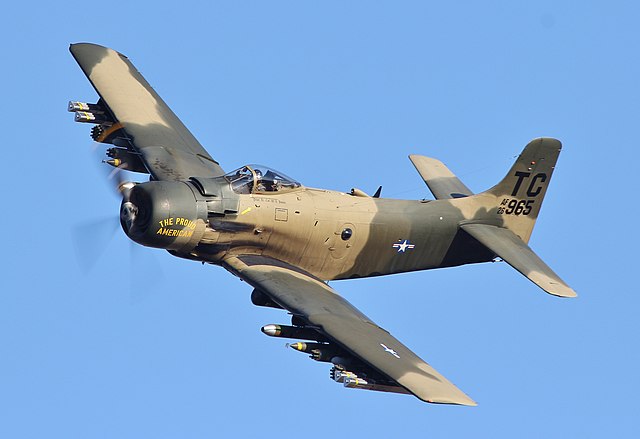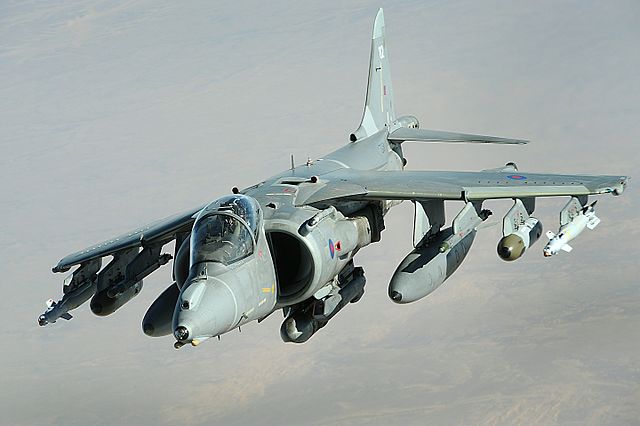Republic F-105 Thunderchief
The Republic F-105 Thunderchief is an American fighter-bomber that served with the United States Air Force from 1958 to 1984. Capable of Mach 2, it conducted the majority of strike bombing missions during the early years of the Vietnam War; the only American aircraft to have been removed from combat due to high loss rates. It was originally designed as a single-seat, nuclear-attack aircraft; a two-seat Wild Weasel version was later developed for the specialized Suppression of Enemy Air Defenses (SEAD) role against surface-to-air missile sites. The F-105 was commonly known as the "Thud" by its crews.
Republic F-105 Thunderchief
Republic YF-105A, AF Ser. No. 54-0098, the first of two prototypes
A USAF F-105F trainer and a F-105D with Mount Fuji in the background
Front view of Republic F-105B with avionics layout
An attack aircraft, strike aircraft, or attack bomber is a tactical military aircraft that has a primary role of carrying out airstrikes with greater precision than bombers, and is prepared to encounter strong low-level air defenses while pressing the attack. This class of aircraft is designed mostly for close air support and naval air-to-surface missions, overlapping the tactical bomber mission. Designs dedicated to non-naval roles are often known as ground-attack aircraft.
A USAF A-10 Thunderbolt II attack aircraft in flight
An A-1 Skyraider of the USAF
RAF Harrier GR9 in flight, 2008
Boeing GA-1, ~1920








